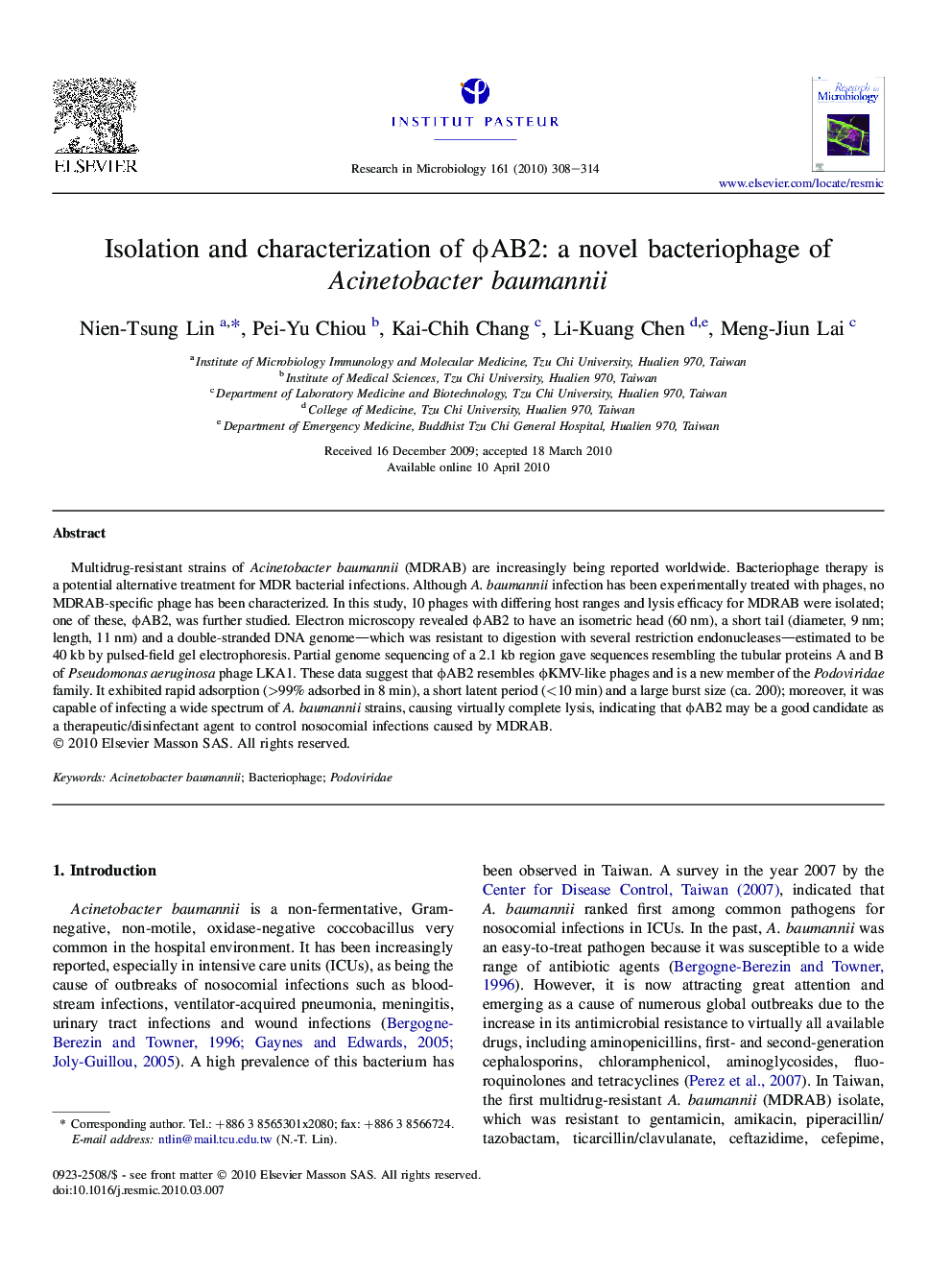| Article ID | Journal | Published Year | Pages | File Type |
|---|---|---|---|---|
| 4358928 | Research in Microbiology | 2010 | 7 Pages |
Multidrug-resistant strains of Acinetobacter baumannii (MDRAB) are increasingly being reported worldwide. Bacteriophage therapy is a potential alternative treatment for MDR bacterial infections. Although A. baumannii infection has been experimentally treated with phages, no MDRAB-specific phage has been characterized. In this study, 10 phages with differing host ranges and lysis efficacy for MDRAB were isolated; one of these, ϕAB2, was further studied. Electron microscopy revealed ϕAB2 to have an isometric head (60 nm), a short tail (diameter, 9 nm; length, 11 nm) and a double-stranded DNA genome—which was resistant to digestion with several restriction endonucleases—estimated to be 40 kb by pulsed-field gel electrophoresis. Partial genome sequencing of a 2.1 kb region gave sequences resembling the tubular proteins A and B of Pseudomonas aeruginosa phage LKA1. These data suggest that ϕAB2 resembles ϕKMV-like phages and is a new member of the Podoviridae family. It exhibited rapid adsorption (>99% adsorbed in 8 min), a short latent period (<10 min) and a large burst size (ca. 200); moreover, it was capable of infecting a wide spectrum of A. baumannii strains, causing virtually complete lysis, indicating that ϕAB2 may be a good candidate as a therapeutic/disinfectant agent to control nosocomial infections caused by MDRAB.
